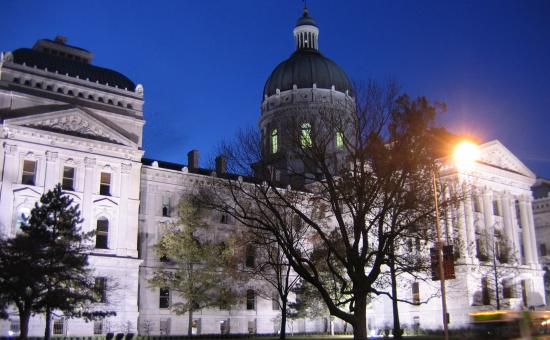Proposed budget takes away teacher bonuses and offers inadequate public school funding for many
02/15/2017
House Republicans offered their version of the budget/formula- now calling for a 1.1 percent statewide average increase in 2018 and 1.7 percent in 2019.
ISTA testified that legislators can do better and urged lawmakers to find a way to prioritize their community-based public schools so that all public school students have an equal opportunity to reach academic standards.
This new version appears to reduce dollars attributable to complexity (poverty) by about $137 million in the first year, then straight-lined in the second-which has the effect of doubling the loss over two years. Likely, the explanation will be that they moved those monies into the K-12 foundation funding to help all kids.
However, complexity dollars recognize that kids are not all the same, that communities do not enjoy all of the same opportunities, and that poverty does negatively impact learning. Transferred money from the complexity line item should not be viewed as new money-they are re-arranging existing funds. This is problematic.
Close to half of the community school districts would see a cut in regular education funding from the prior year in 2018. This is not sustainable for these districts, some of which have seen real cuts over several years.
The funding formula, by school corporation, has been made available on the General Assembly website.
Here are some positive points to share:
- A significant bump in funding to English Language Learner programs, going from $200 per student to $300 in 2018 and $350 in 2019.
- A 2 percent increase in the most severe category for special education funding in the first year.
- Academic Honors funding would receive increases as well.
- The 13th check for retirees is funded.
However, a significant change in the House budget strips $84 million in teacher performance bonus money over the two-year period ($40 million each year under the bonus program and $2 million each year for bonuses to teachers who would not otherwise receive one due to working in a D or F school).
Make no mistake - ISTA is not a believer that paying teachers by stipend should be the model. The implementation of these bonuses has not been consistent, or fair. However, the $84 million was set aside specifically to augment teacher compensation, address teacher needs and lessen the teacher shortage. Those goals are being abandoned and the funds are ostensibly being re-allocated for any or all of the following new priorities:
- Virtual charter schools receiving 100 percent of the per-student funding that brick and mortar schools receive, increased from the current 90 percent.
- A 20 percent increase for grants to innovative network charter schools.
- A new $5 million grant program to encourage traditional school districts to consolidate.
- A new $3 million for career pathways.
- A 4 percent increase to a few adult charter schools.
- Another $26 million over the biennium in new money for vouchers.
- A reserve of $41 million to fund new charters.
- A new entitlement for private schools (accredited or not) to receive state grants to employ their own school resource officers.
- Providing an initial 31 percent larger limit on the tax credits available to taxpayers who contribute money to fund private school tuition subsidies.
These are the trade-offs being made with the available money. There is much work yet to be done.
